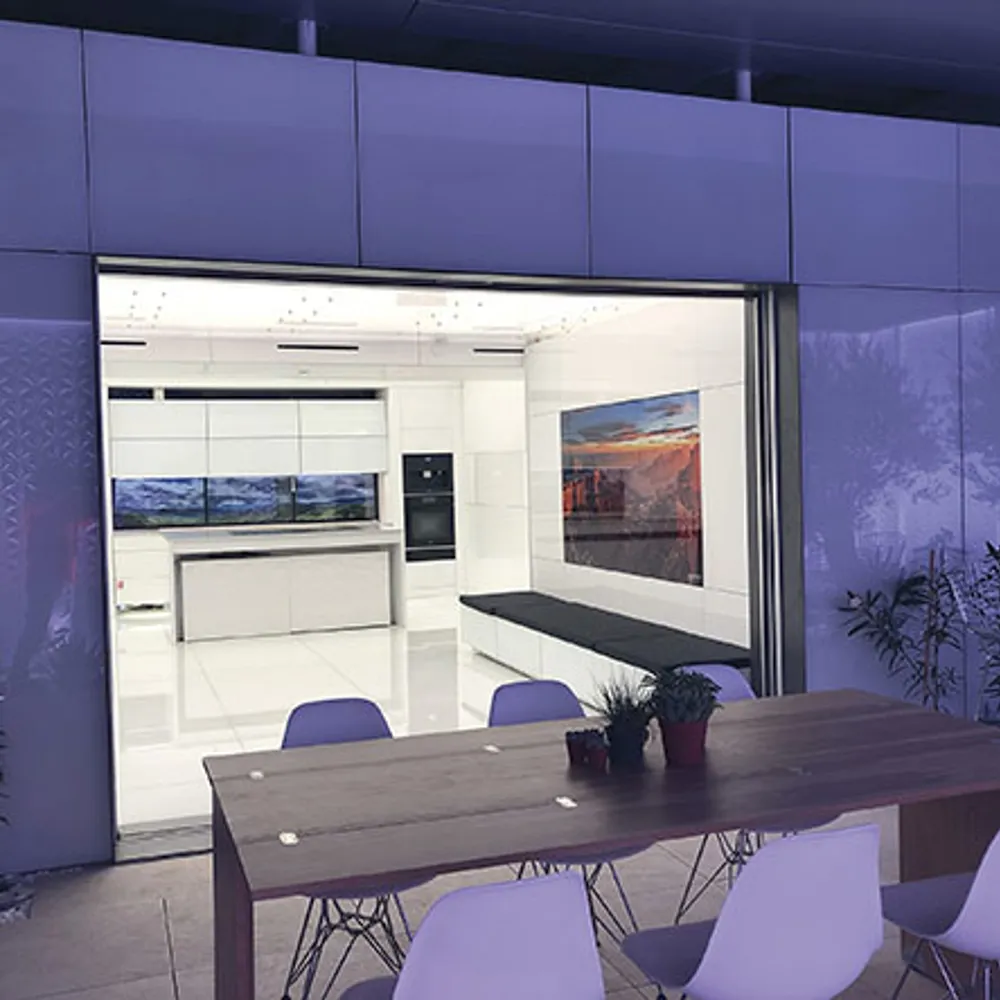Time Travel and See Your Future House
December 13, 2019
- Author: Jennifer Taylor


November/December 2019
More articles in this issue:
Virginia Tech’s solar-powered FutureHAUS descended upon a residential neighborhood in Alexandria, Virginia — near the grounds of Virginia Tech’s forthcoming Innovation Campus and a mile south of CTA’s headquarters this summer. This futuristic, 900 square foot, single family home was designed by a Virginia Tech University team with the goal of disrupting the residential construction industry. Students from four of Virginia Tech’s colleges (Architecture, Engineering, Science and Business) collaborated to build the FutureHAUS and in November 2018, won first place at the Solar Decathlon in Dubai, making it the world’s best solar-powered home.
At its core, the architectural design of the FutureHAUS is quite innovative. Using what the team refers to as the “cartridge concept,” the entire house can be transported in pieces smaller than eight feet by six feet, essentially fitting in the back of a UPS truck.

A Smarter Home
The FutureHAUS is a perfect example of how technology makes a house accessible for people with disabilities and the elderly. For example, load cells located in the kitchen floor can detect who is
present by measuring their body weight, which then uses LINAK actuators to trigger the cabinets to smoothly raise or lower to the optimal height for whomever approaches to grab a glass out of the cabinet.
“The idea that a home can accommodate any user regardless of their age or ability is the true definition of a smart home,” says Joseph Wheeler, co-director, Center for Design Research and professor of architecture at Virginia Tech University. “The most dramatic and practical feature
is the upper kitchen cabinet wall that can automatically lower when access to upper shelves is needed making it ideal for a child or any vertically challenged individual.”
The house is also energy efficient and produces twice the amount of power than it uses. For instance, the shower is a closed loop system equipped with sensors in the drain to determine if the water is clean enough to be sent through a filtration system and back into the showerhead for reuse. This means someone could leave the shower running for an hour without wasting a single drop.
The house includes moveable walls in the bedroom and living room; a drone hatch next to the front door to enable drones to safely and securely deliver packages from online retailers to your
home; three touchscreen TV backsplashes in the kitchen connected to all of the appliances; and a magnetic induction stove top, which doubles as counter space, and transfers heat directly into a pot to save energy and speed up the cooking process.
“Smart home products will never truly be smart until they are seamlessly integrated into their working environment, not just controlled by a phone or your voice,” says Wheeler. “For example, a smart appliance is truly smart if it is integrated with a whole kitchen and home network where the
appliance can communicate with someone while cooking or using the whole kitchen environment. Integration of the technology into the entire kitchen environment is essential and the technology cannot be awkward or uncomfortable to use.”
This award-winning house exemplifies how tech for good can have a positive impact on people’s lives. Not only would it help people age in place, it also is extremely affordable — so much so that
the U.S. Department of Housing and Urban Development (HUD) visited the FutureHAUS prototype in Alexandria and expressed interest in its application for public housing units. Though not on the market for sale today, the Future-HAUS is worth keeping an eye on.
Join our community of innovators and shape the future of technology.



